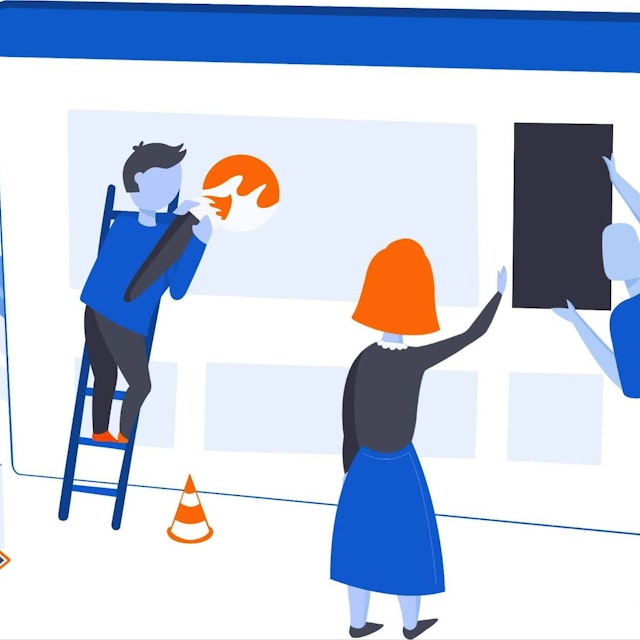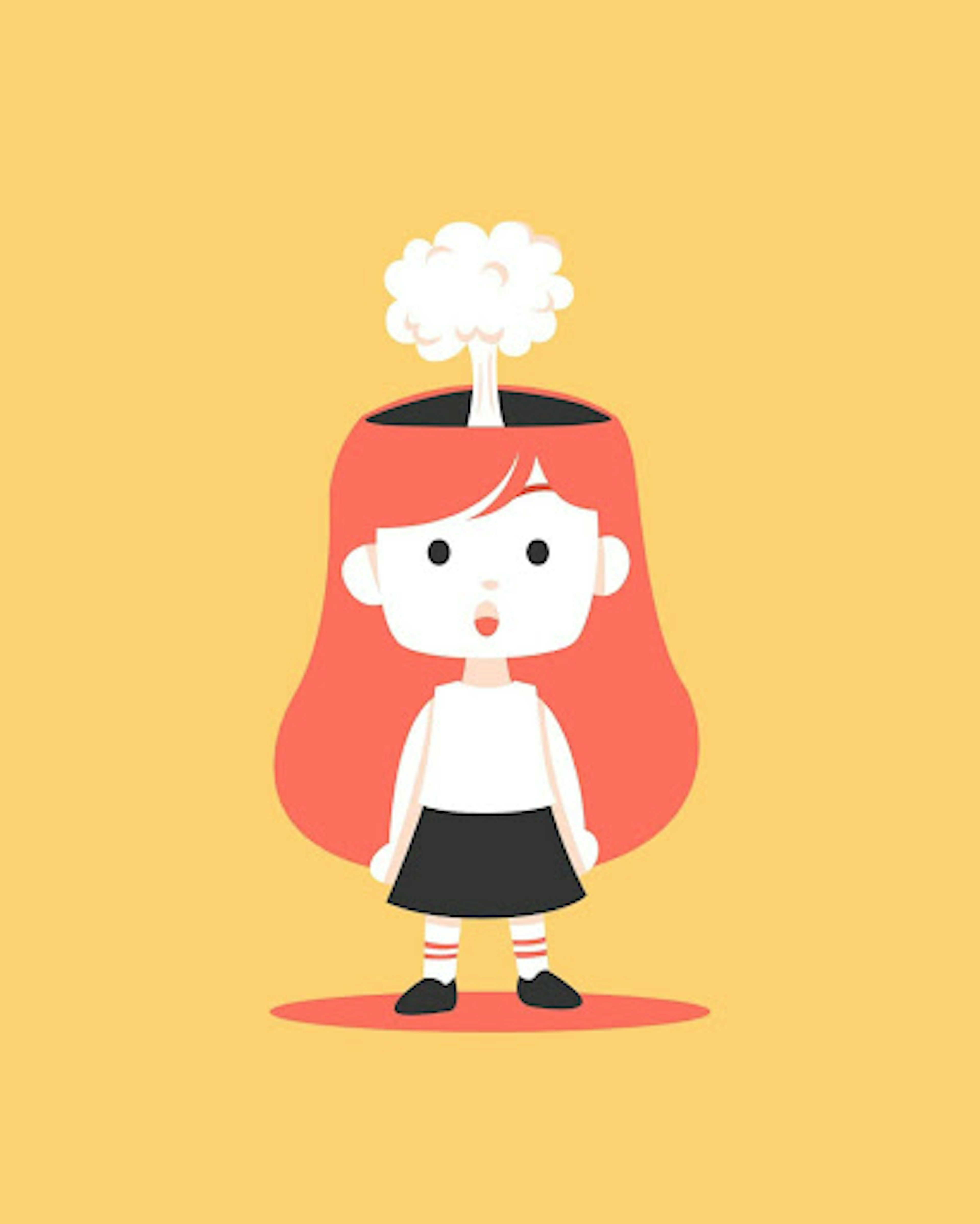The True Cost of a “Quick” Design Request
It’s never just five minutes. Here’s how those “quick” requests are eating your time, budget, and creative momentum—and what to do instead.
Written byMichaela Brown
Updated onJune 24, 2025

It’s never just five minutes
Every marketer, PM, or founder has sent the message: “Hey, can you make a quick version of this for [client/platform/slide]?”
It seems harmless. But so-called quick requests cause a chain reaction: finding the file, opening the design tool, updating it, exporting it, uploading it, then waiting for review, feedback, and revision.
Multiplied across teams, platforms, and clients? Those “quick” requests often cause design teams to spiral into request chaos, creating hours of lost time, bottlenecks, and frustration.
This post breaks down the cost of “quick” design, how to stop the request spiral, and how AI-powered tools like Visual can stop the spiral into chaos.
Key takeaways
Most “quick” design tasks cost far more than we think
They create bottlenecks, delay launches, and burn out design teams
Structured AI tools let you generate assets fast, without reinventing them
The hidden workflow behind a 'quick' design request
Even if you want to tweak the smallest detail in a design, it will take more than five minutes. No matter how small the ask is, all designers have to follow this process to properly fill your request:
Find the file: Depending on your design team’s file structure, this alone could take five minutes.
Open, duplicate, and reconfigure the layout: Changing one small detail could throw off other elements.
Update copy, adjust layout, check alignment: Any good designer will double-check their work to ensure layout, alignment, and copy flow together.
Export to multiple formats and channels: Engineers might need a PNG for their report, and marketing might need a thumbnail for YouTube.
Share for feedback, wait for revisions: Design work is iterative. All requests should have two sets of eyes.
Upload, publish, or send to stakeholders: Again, depending on your team’s internal processes, this alone could take five minutes.
What looked like five minutes? Takes 30–60+ minutes per task.

Image by Toms Štāls via Unsplash
The cost of quick design
Budget
Fielding “five-minute” requests will cost money directly and indirectly.
Ad hoc requests strain resources and leave designers with little time to focus on strategic work that moves the needle. These types of requests are generally not tracked, making it hard to measure impact.
Multiple quick requests will prevent designers from focusing on quality. Quick turnaround times from multiple teams across your business might cause designers to cut corners.
This strain on resources and lack of measurable impact will appear in your bottom line.
The direct impact of request chaos will likely appear when it’s time to launch a product. One of the best ways to drive revenue is with product launches and improvements. However, launches are a lot of work and need the full attention of your creative team to pull them off successfully. If your team is lost in request chaos, it can cause launch delays and missed revenue.
Losing money from delaying launches is called the Cost of Delay; it’s essentially the revenue you lose by not releasing a product sooner. According to SPK and Associates, the cost of delaying a launch by a month could cause a larger company to lose $1.4 million in revenue.
Time
Now we know that ‘five-minute’ requests never take five minutes. But how much productivity time do designers really lose? And who feels the ripple effects of that?
Constantly switching between tasks is called context switching, and it’s a proven time sink: according to the American Psychological Association, multitasking and constantly switching gears can decrease productivity by 40 percent. Interrupting designers with constant tasks disrupts the amount of time they can spend on focused work and can cause them to work even more slowly.
Besides designers, marketing teams are most affected by request chaos. It makes sense, considering these two teams work closely together to produce content. Request chaos on a design team causes a bottleneck for the marketing team, where the designers have more requests than time. This leaves marketers waiting for the assets they need for the next campaign or launch.
Creative energy
A dip in creative energy will prevent designers from focusing on high-leverage work. AKA, work that moves the needle for your company.
Constantly switching from one urgent ‘quick’ task to another will zap designers of their creative energy. It can even increase stress levels and lower IQ. These factors lead to fragmented workflows and mental fatigue. Request chaos can even cause your designers to make some questionable design choices. Studies have shown that stress and mental fatigue contribute to poor decision-making skills.
Safe to say, the design request chaos is not only mentally taxing, it’s a systemic drain on your company that will cost you money.

Image by Alvaro Montoro via Unsplash
Why teams fall into the “quick” trap
Nobody wants to fall into the quick request trap, but it’s a slippery slope. Most teams fall into request chaos when they lack a strong visual system and self-serve options like scalable templates. This causes bottlenecks for the marketing team and beyond.
Request chaos often starts when businesses have to adapt to sudden market shifts or grow too quickly without scaling. It doesn’t start as full-blown chaos either, but one favor for your favorite marketing manager can compound quickly.
How to break the cycle
Build a system of reusable templates
If you want to break the cycle and rid yourself of chaos, building a system of reusable templates is your best bet. Reusable templates allow teams to self-serve and create on-brand graphics without having to disrupt a designer.
Start by doing some research on your most commonly produced assets, like blog headers, Instagram posts, quote cards, or feature drops. Then you can branch out and create templates for specific departments.

Illustration by Eva Wahyuni via Unsplash
Use structured AI to generate fast, on-brand content
One way to quickly build on-brand templates is with a product like Visual. This human-led AI tool uses structured prompts from humans to create editable templates at scale. Designers can establish brand-safe guardrails, allowing non-designers to create consistent assets.
With Visual, the next time someone asks, “Can you just make this real quick?” Designers can say, “We have a template for that.” All without touching Figma.
What your team gains when “quick” becomes automatic
Everyone wins when you automate “quick” requests. Designers get to keep their momentum and creative energy, allowing them to focus on high-leverage creative work that drives results. Marketers can move as quickly as they need to without compromising their brand, allowing them to launch fast, effective, and aesthetically pleasing campaigns. And you win by implementing a scalable creative system that grows with your business.
Quick design shouldn’t cost you quality—or time
A “quick” request might feel small, but its compounding cost is massive. Design teams burn out and lose their creative energy, and marketers are stuck waiting for deliverables. If you want to scale without burning out your team, you need more than fast fixes. You need a system.
Use Visual to generate branded content on demand—without the design delay.